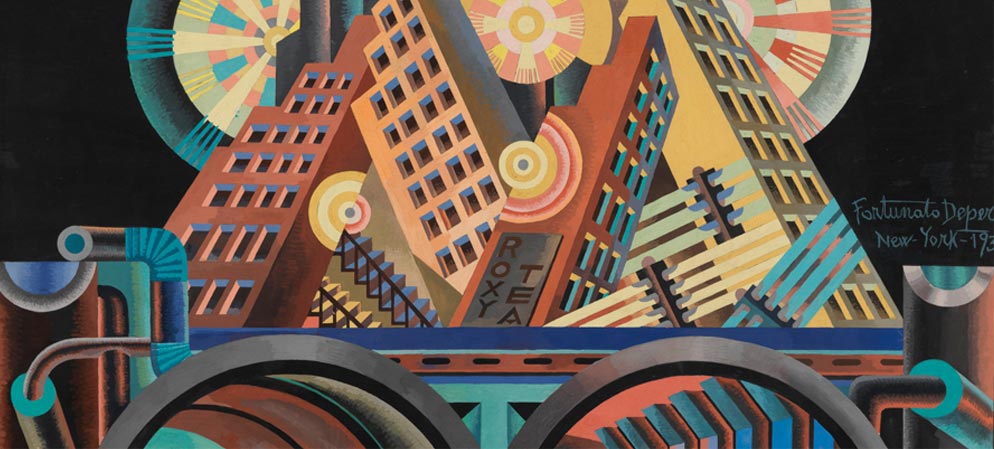Italian Futurism was officially launched in 1909 when Filippo Tommaso Marinetti, an Italian intellectual, published his “Founding and Manifesto of Futurism” in the French newspaper Le Figaro. Marinetti’s continuous leadership ensured the movement’s cohesion for three and half decades, until his death in 1944.
To be a Futurist in the Italy of the early 20th century was to be modern, young, and insurgent. Inspired by the markers of modernity—the industrial city, machines, speed, and flight—Futurism’s adherents exalted the new and the disruptive. They sought to revitalize what they determined to be a static, decaying culture and an impotent nation that looked to the past for its identity. Futurism began as a literary avant-garde, and the printed word was vital for this group. Manifestos, words-in-freedom poems, novels, and journals were intrinsic to the dissemination of their ideas. But the Futurists quickly embraced the visual and performing arts, politics, and even advertising. Futurist artists experimented with the fragmentation of form, the collapsing of time and space, the depiction of dynamic motion, and dizzying perspectives. Their style evolved from fractured elements in the 1910s to a mechanical language in the ’20s, and then to aerial imagery in the ’30s. No vanguard exists in a void—all are touched by their historical context. The Futurists’ celebration of war as a means to remake Italy and their support of Italy’s entrance into World War I also constitute part of the movement’s narrative, as does the later, complicated relationship between Futurism and Italian fascism.
This exhibition endeavors to convey the spirit of Italian Futurism in all of its complexity. The Guggenheim Museum’s architecture lends itself to the display of this multidisciplinary idiom. Taking its cue from the Futurists’ concept of the “total work of art” (an ensemble that surrounds the viewer in a completely Futurist environment) and their aim to achieve a “reconstruction of the universe,” the presentation integrates works in multiple mediums on all levels of the rotunda. Objects are organized in a roughly chronological order, with filmic components bringing to life some of the movement’s more ephemeral activities, such as performance and declamation. The Futurists were insurrectionary and stridently vocal, and thus Italian Futurism welcomes a certain amount of visual and aural cacophony.
Futurism was punctuated by paradoxes: while predominantly antifeminine, it had active female participants; while calling for a breakdown between “high” and “low” culture, it valued painting above other forms of expression; while glorifying the machine, it shied away from the mechanized medium of film. By 1929, the artists who had denounced traditional institutions saw their leader, Marinetti, become a member of the Academy of Italy. And many of the revolutionary Futurists complied in some way with the Fascist regime. Through a comprehensive examination of Italian Futurism’s full history, the exhibition offers an opportunity to reassess one of the most contentious of modernist movements.
Please note that Annex Levels 5 and 7 (see Museum Map), which contain Benedetta's murals and major works by Giacomo Balla and Fortunato Depero, close August 20.


